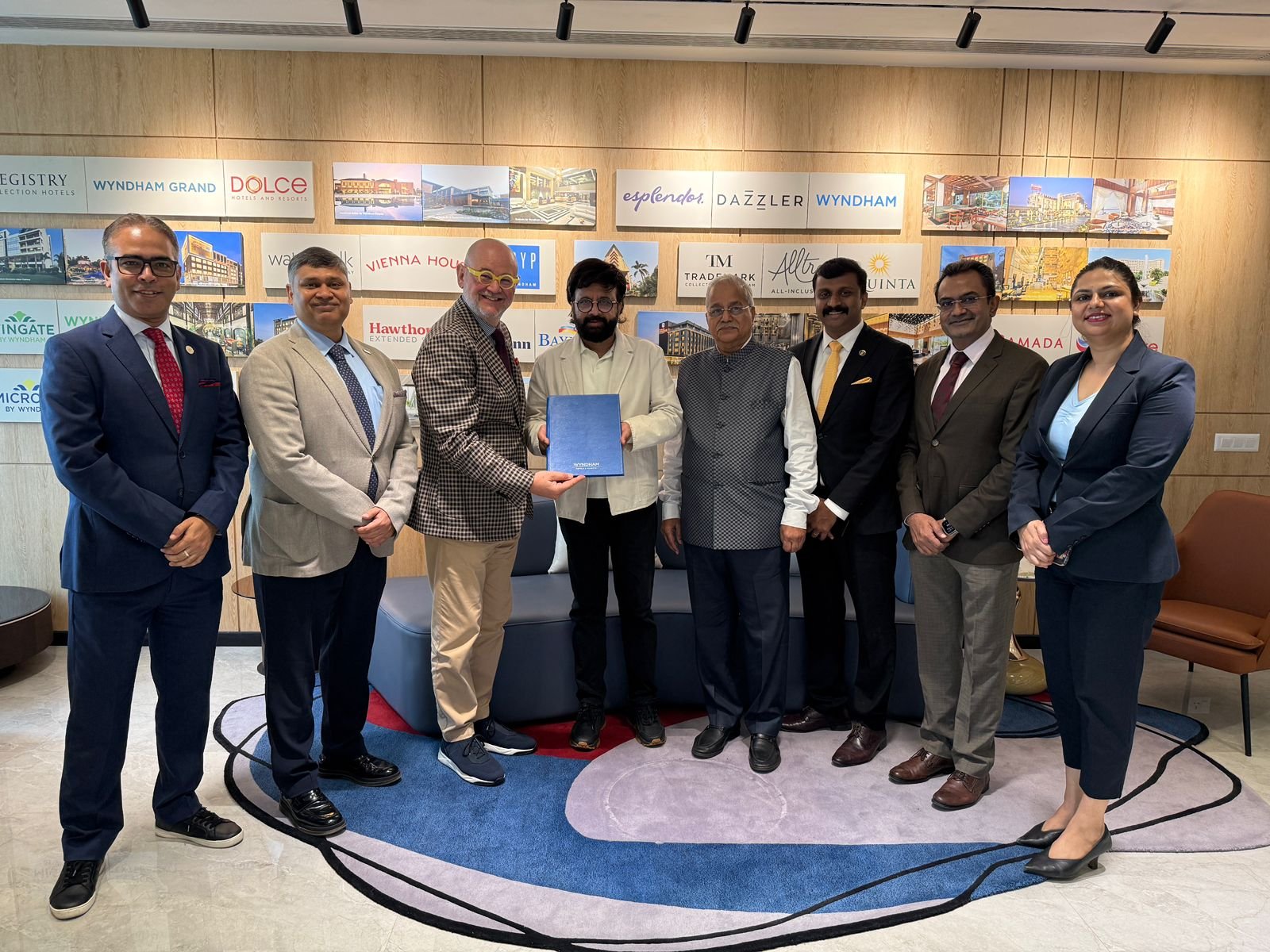Travel Trends
Beyond Borders Tourism Coalition urges action as new tariffs and political instability stall recovery for tourism industry

The Beyond Borders Tourism Coalition, a unified alliance of US and Canadian tourism, trade, and association stakeholders, calls for urgent policy clarity and coordinated action in the face of escalating tariffs and the recent funding cuts of critical NGOs and infrastructure support, while historic uncertainty grips cross-border travel.
The combined effects of tariffs, funding cuts, new fees to enter the United States, and uncertainty at border crossings are undermining recovery, deterring new investment, and reducing opportunities for cultural and economic exchange.
“Rising tariffs and economic headwinds are cutting into consumer purchasing power, reducing demand for U.S. vacations, and forcing our members to reconsider future investment and hiring. The economic impact has been immediate and measurable – USTOA members are already reporting millions of dollars in lost bookings and revenue, with some projecting a decline of up to 11% in international visitor spending for 2025 alone,” says Terry Dale, President, US Tour Operators Association. “These losses translate to cutbacks in operations, workforce reductions, and missed opportunities for communities nationwide. The ripple effects across our sector are deeply concerning, underscoring the urgent need for clear, stable policies that support a thriving U.S. travel economy.”
The Beyond Borders Tourism Coalition identified earlier this year that proactive, collaborative approaches are needed to reverse these trends and restore confidence in an industry that in the past contributed approximately $2.5 trillion USD to North America’s GDP, making up nine percent of total economic output. In the US, tourism supports close to 20 million jobs while in Canada 1.9 million jobs are attributed to the visitor economy.
“Thousands of jobs are on the line as these damaging tariffs disrupt the flow of tourists, drive up costs, and threaten our members’ livelihoods. The economic toll is immediate: Canadian tour operators are facing millions of dollars in lost bookings and mounting operational costs, with some businesses reporting declines of over 70% in cross-border travel activity for 2025. If decisive action isn’t taken, our communities will feel an economic impact that could take years to reverse as tourism-dependent businesses struggle to survive and local economies miss out on vital revenue,” says Jean Hébert, Executive Director, Canadian Association of Tour Operators (CATO).
The negative impacts on the visitor economy on both sides of the border continue through what is traditionally tourism’s busiest season across North America.
- Plummeting Travel Bookings: Foreign tourist spending in the U.S. is forecasted to drop by 11% in 2025, an $18 billion loss. Advanced air bookings between Canada and the U.S. have fallen by over 70% year-over-year.
- Hospitality Warning Signs: Major hotel chains and urban tourism boards are bracing for sharp declines (as much as 6-7% in some cities) in international visitation owing to economic and policy headwinds, with companies adjusting revenue forecasts downward. (Source: Bloomberg, Hospitality Insights)
- Consumer Impacts: Tariffs are driving the cost of goods higher on both sides of the border, eroding discretionary travel budgets and undermining consumer and business confidence in travel planning. (Source: TravelWeek)
- Regional & Indigenous Impact: Community initiatives and Indigenous-led tourism are being threatened by reduced travel, job cuts, and cultural setbacks.
“The ATTA’s recent global survey makes it clear: political instability and uncertain government policies are being sharply felt across the adventure travel sector. Our research shows that 93% of U.S. operators and 89% of their international counterparts anticipate negative impacts for at least the next year,” says the Adventure Travel Trade Association’s CEO Shannon Stowell. “While our industry is holding steady for now, the greatest challenge is uncertainty – especially around finances, safety, and the potential for sudden policy changes that disrupt travel plans and business confidence. As an industry, we must continue to adapt, but lasting resilience will require stronger support, greater policy clarity, and a renewed commitment to cross-border collaboration.”
All members of the Beyond Borders Tourism Coalition urge policymakers in the U.S. and Canada to prioritize negotiation, transparency, and cross-border cooperation over protectionist measures. Divisive trade and fiscal policies need to be reassessed in favor of approaches that restore confidence and support the livelihoods of millions:
“Both the U.S. and Canadian tourism economies have lost millions in revenue due to drastically reduced cross-border travel. The economic impact ripples across communities – from tour companies of all sizes to main street hotels and restaurants, iconic attractions, big cities, and rural destinations – many of which depend heavily on cross-border tourism to stay afloat,” says Catherine Prather, President of the National Tour Association. “Beyond advocating for stability, proper funding, and common-sense policy, we urgently need to restore global confidence that the U.S. remains a safe, welcoming, and inclusive destination. Without that commitment, the long-term viability of our industry and the communities we support is at serious risk.”
“Motorcoach tourism is the backbone of North American travel, generating $90 billion annually in group travel and connecting millions to vibrant cities, historic towns, and natural wonders,” says Fred Ferguson, President and CEO of the American Bus Association. “Our industry supports 500,000 jobs and countless small businesses, providing accessible and sustainable travel options for all. As a vital economic driver, motorcoach tourism fuels local economies and enriches communities. It’s essential that policies continue to promote both vibrant international and domestic travel – ensuring long-term growth and opportunity for our industry and the travelers we serve.”
“Student and youth travel is a cornerstone of North America’s visitor economy, generating billions in economic activity, supporting thousands of jobs, and providing life-changing educational and cultural experiences for young people each year. These journeys foster global understanding and inspire future leaders. Sadly, new tariffs and ongoing economic instability are making travel unaffordable for many schools and families. Rising costs, canceled programs, and greater uncertainty are cutting off opportunities just when our youth need them most,” says Carylann Assante, CAE, CEO of the Student and Youth Travel Association (SYTA). “Protecting student and youth travel isn’t just about economics – it’s about safeguarding access to learning, exchange, and hope for the next generation.”
“Indigenous tourism is a vital bridge connecting communities, cultures, and economies across Canada and the United States. This sector creates opportunities for Indigenous entrepreneurs, fosters cultural revitalization, and delivers unique experiences that attract millions of travelers every year,” says Keith Henry, President and CEO of the Indigenous Tourism Association (ITAC). “But the recent wave of tariffs and mounting political instability threatens all we have built. Rising costs and uncertainty hurt Indigenous-owned businesses disproportionately, putting jobs, livelihoods, and intergenerational knowledge at risk. To protect the promise of Indigenous tourism – for our communities and for future generations – our leaders must restore stable, open, and collaborative cross-border policies that allow Indigenous tourism to thrive.”
“International inbound travel is one of America’s strongest economic exports and a powerful tool for global connection – yet it’s being undermined by shortsighted policies, increased entry costs, and damaging rhetoric,” says Lisa Simon, CEO of the International Inbound Travel Association (IITA). “Our members are seeing lower bookings for the fall and into 2026 due to avoidable barriers like visa delays, excessive fees, and policy unpredictability. This is not just bad for business – it’s bad for America’s global image. We call on U.S. leaders to treat inbound travel as the essential economic and diplomatic asset it is and to act urgently to restore competitiveness, clarity, and confidence in traveling to the United States.”
“For Destination Original Indigenous Tourism, we’ve seen firsthand how recent regulations are jeopardizing opportunities on the world stage – including Indigenous inclusion in major cultural showcases. With global eyes turning to North America for events like the upcoming FIFA World Cup, this is our chance to welcome guests to our lands and lift up Indigenous musicians, artists, and creators from Canada, the U.S., and Mexico. Now, those voices risk being silenced,” says Sebastien Desnoyers-Picard, President and CEO of Destination Original Indigenous Tourism (DO-IT). “This is more than a cultural loss – it’s a missed economic opportunity in marketing, sales, and global reach for communities already facing barriers.The impact could be profound and far-reaching.”
The article Beyond Borders Tourism Coalition urges action as new tariffs and political instability stall recovery for tourism industry first appeared in TravelDailyNews International.
Travel Trends
Top 35 Travel Trends in August

At the forefront of digital innovation, Mindtrip debuts a new AI-powered mobile app, offering real-time, hyper-personalized travel guidance that adapts to users on the go. United Airlines also upgraded its app with a connecting flight-centric feature, simplifying complicated itineraries for smoother travel. Meanwhile, the luxury sector is expanding with a renewed focus on wellbeing. Marriott International’s Luxury Group launched its ‘Luxury Wellbeing Series 2025’ across top Asian destinations, while Loreto’s Mailena, debuting in late summer 2026, introduces a restorative adults-only retreat to Mexico’s Baja Peninsula.
Nostalgia is trending, too as ‘Pan Am Journeys’ by Private Air, under license from the iconic Pan American World Airways, offers retro-inspired, private air travel experiences. Similarly, Carl Friedrik’s ‘Carry-on X Core Collection’ nods to mid-century aviation aesthetics with sleek, functional design. On the water, Viking makes waves by entering the Indian river cruise market with the introduction of the ‘Viking Brahmaputra,’ bringing high-end cruising to the subcontinent. Nox, looking to the future of European rail travel, announces plans for 2027 overnight trains with private, comfort-first cabins—reshaping the night train experience.
On the lifestyle side, Four Seasons adds flair with its ‘Resort Pajamas Collection,’ while Groupe GM and Hei Poa debut a soothing, protective sun care hotel amenity line. Additionally, ‘The Cayman Club’ by Cayman Jack provides travelers with a sense of calm amid travel disruptions, and ‘Camp Unwritten’ by World of Hyatt and Reese’s Book Club invites guests to glamp with books, nature, and luxury.
Altogether, August’s travel trends reflect a traveler mindset increasingly shaped by individuality, relaxation, and meaningful escape—one that seeks not just destinations, but immersive, personal journeys.
Travel Trends
Nepal’s Royal Tulip opens Doors

In a major push to elevate Nepal’s hospitality landscape, Sarovar Hotels—part of the Louvre Hotels Group—has launched Royal Tulip Chitwan, the brand’s premium entry into the country. Situated at the edge of Chitwan National Park, a UNESCO World Heritage Site, the new resort seamlessly blends luxury, nature, and Nepali culture. The opening marks the debut of the Royal Tulip brand in Nepal and signals growing confidence in the country’s tourism potential.
Developed by KTM Hospitality (a KTM Group Holdings company), the resort spans over 4 acres and offers 65 upscale rooms and villas. Accommodation options include private Pool Villas, serene Water Villas, and unique Machan-style stays that elevate the guest experience. With a focus on nature-inspired design and top-tier comfort, the resort is positioned as an ideal destination for luxury travellers, wildlife enthusiasts, and honeymooners alike.
Royal Tulip Chitwan goes beyond just accommodation, offering world-class facilities like a luxury spa, fitness centre, swimming pool, and multiple gourmet dining options. Guests can enjoy meals at Majhighar, Forest Flame, the revolving deck Machan, or unwind at the stylish Tanavi Sports Bar. The emphasis is on immersive experiences rooted in local culture and cuisine, combined with global service standards.
Ajay K. Bakaya, Chairman of Sarovar Hotels, emphasised the strategic significance of this launch, noting Nepal’s increasing appeal among Indian and international tourists. He stated that Royal Tulip Chitwan is designed to offer a luxurious yet culturally authentic retreat. Rameshwar Shah of KTM Hospitality echoed this sentiment, highlighting the resort’s role in promoting Chitwan as a luxury eco-tourism hotspot.
With this debut, Louvre Hotels Group is expanding its South Asian footprint by targeting high-potential, experience-driven markets. Royal Tulip Chitwan is expected to become a landmark for leisure travel in Nepal, attracting guests seeking a tranquil yet luxurious escape surrounded by nature and culture.
Travel Trends
Wyndham expands in Wayanad Hills

Wyndham Hotels & Resorts is strengthening its footprint in South India with the upcoming Ramada by Wyndham Wayanad Vythiri, a 52-room upscale hotel scheduled to open in 2026. Nestled in the lush greenery of Vythiri, this property is being developed by local entrepreneur Asok Thirikkoth. The hotel is poised to cater to a growing wave of both domestic and international travellers seeking wellness and nature-driven escapes.
The hotel will feature modern amenities, including a full-service spa, all-day dining, meeting and event spaces, and rooms designed for both leisure and business needs. This launch is expected to enhance the hospitality landscape of Wayanad, a region gaining popularity for eco-tourism and holistic wellness offerings.
Asok Thirikkoth emphasised that the Ramada brand’s arrival aligns with the vision to elevate local tourism. Wyndham’s Rahool Macarius also highlighted Wayanad’s potential as a high-demand destination for eco-conscious travelers, signaling the brand’s long-term commitment to Tier-2 markets.
With over 9,300 hotels globally, Wyndham’s strategic expansion in India continues, reflecting its focus on emerging leisure destinations and robust regional collaborations that prioritise sustainable growth and premium guest experiences.
-

 Brand Stories2 weeks ago
Brand Stories2 weeks agoBloom Hotels: A Modern Vision of Hospitality Redefining Travel
-

 Brand Stories1 week ago
Brand Stories1 week agoCheQin.ai sets a new standard for hotel booking with its AI capabilities: empowering travellers to bargain, choose the best, and book with clarity.
-

 Destinations & Things To Do2 weeks ago
Destinations & Things To Do2 weeks agoUntouched Destinations: Stunning Hidden Gems You Must Visit
-

 Destinations & Things To Do1 week ago
Destinations & Things To Do1 week agoThis Hidden Beach in India Glows at Night-But Only in One Secret Season
-

 AI in Travel2 weeks ago
AI in Travel2 weeks agoAI Travel Revolution: Must-Have Guide to the Best Experience
-

 Brand Stories4 weeks ago
Brand Stories4 weeks agoVoice AI Startup ElevenLabs Plans to Add Hubs Around the World
-

 Brand Stories3 weeks ago
Brand Stories3 weeks agoHow Elon Musk’s rogue Grok chatbot became a cautionary AI tale
-

 Asia Travel Pulse4 weeks ago
Asia Travel Pulse4 weeks agoLooking For Adventure In Asia? Here Are 7 Epic Destinations You Need To Experience At Least Once – Zee News
-

 AI in Travel4 weeks ago
AI in Travel4 weeks ago‘Will AI take my job?’ A trip to a Beijing fortune-telling bar to see what lies ahead | China
-

 Brand Stories4 weeks ago
Brand Stories4 weeks agoChatGPT — the last of the great romantics

You must be logged in to post a comment Login